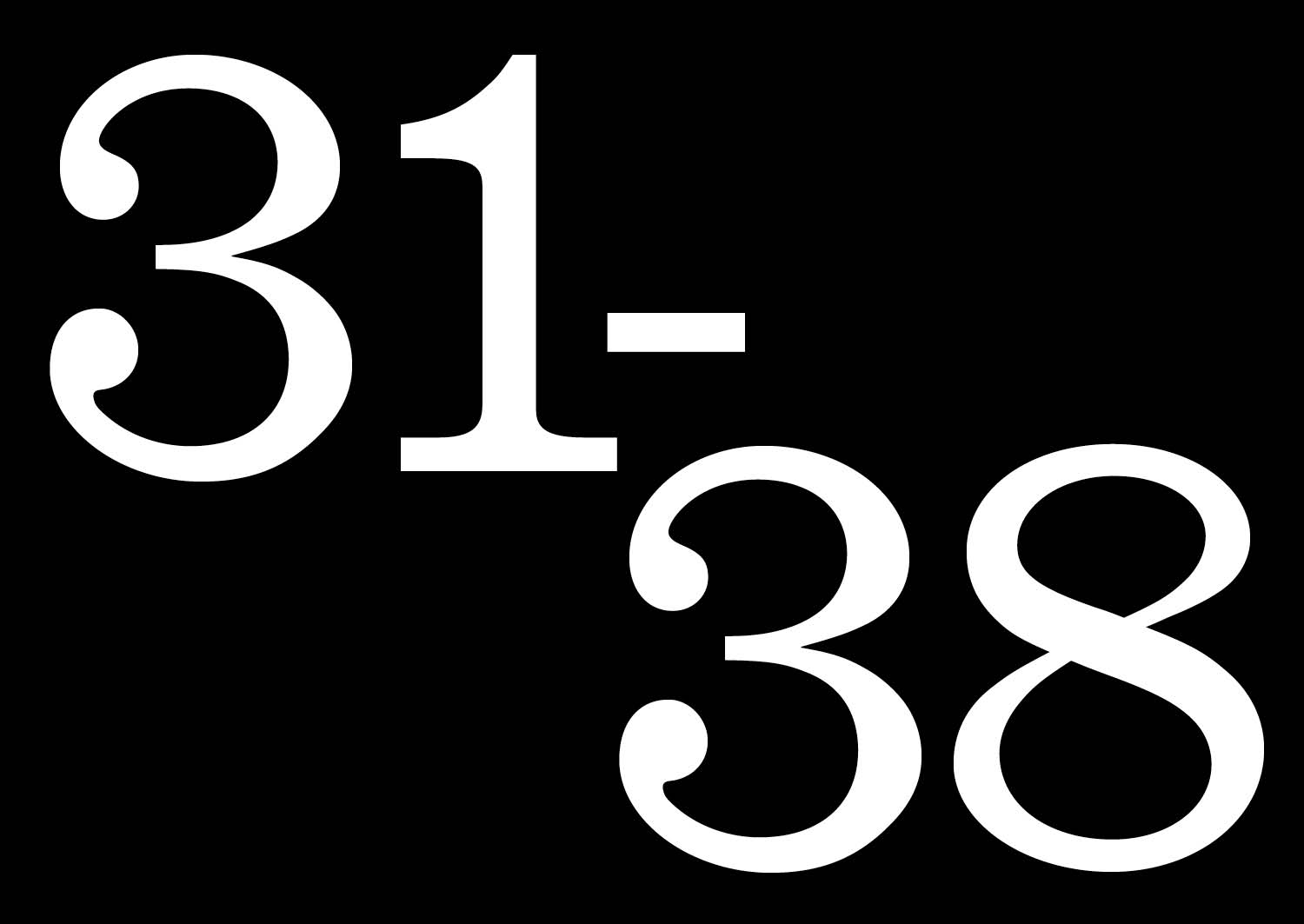Order Subscription, 31st to 38th issue

Issues 31, 32, 33, 34, 35, 36, 37 & 38
8 × 20 pages and sometimes more
21 × 29,7 cm, CMYK
Design: Syndicat
2021-2022
Order Subscription, 31st to 38th issue
Issues 31, 32, 33, 34, 35, 36, 37 & 38
8 × 20 pages and sometimes more
21 × 29,7 cm, CMYK
Design: Syndicat
2021-2022
n°21 — An original: The Most Beautiful Swiss books 2004–2006. Authors: James Langdon, Laurent Benner & Adrian Samson
Interview with Laurent Benner by James Langdon
Photos: Adrian Samson
20 pages, 21 × 29,7 cm, CMYK
25th March 2020
ISBN: 979-10-95991-16-8
ISSN: 2558-2062
Interview with Laurent Benner by James Langdon
Photos: Adrian Samson
20 pages, 21 × 29,7 cm, CMYK
25th March 2020
ISBN: 979-10-95991-16-8
ISSN: 2558-2062
The awards programme The Most Beautiful Swiss Books has been organised almost without interruption by the Swiss Federal Office of Culture since 1943. A book design award with such history, particularly in a book-making culture as rich as Switzerland’s, offers insightful perspectives on Graphic Design for publishing, the culture that commissions and values it, and the critical discourse that surrounds it.
Each year the awarded books are documented in a substantial catalogue, made by one of the graphic designers awarded in previous years. The inherently self-reflexive tendencies of such catalogues—books about books, Graphic Design in the context of Graphic Design—present stimulating yet rather fraught conditions for graphic designers to work in. Looking back over the catalogues produced during the last two decades, a conversation-through-practice is clearly legible. After a conceptually sophisticated catalogue or series (often designers have been commissioned for series of two or three catalogues) follows a simple visual document. After a modest, finely-crafted production comes something more lavish or experimental.
The 2004–2006 catalogues were conceived by Laurent Benner, a Swiss designer working in London, and designed with English designer Jonathan Hares. Laurent’s proposition for the 2004 catalogue was audacious. He contacted the printers of each of the 20 awarded books from that year and asked them to reprint a section of their book. These reprinted sections were then transported to a single Swiss bookbinder and bound, with some additional pages of front- and back-matter, to comprise the catalogue.
n°22 — Special Issue: Artists posters. Authors: Thierry Chancogne, Jérôme Dupeyrat, Mathias Augustyniak
Authors: Thierry Chancogne, Jérôme Dupeyrat, Mathias Augustyniak
72 pages, 21 × 29,7 cm
CMYK + 1 PMS
27 May 2020
ISBN: 979-10-95991-21-2
Authors: Thierry Chancogne, Jérôme Dupeyrat, Mathias Augustyniak
72 pages, 21 × 29,7 cm
CMYK + 1 PMS
27 May 2020
ISBN: 979-10-95991-21-2
On the occasion of a visit to the exhibition at the MRAC Occitanie / Pyrénées-Méditerranée entitled Honey I rearranged the collection, Jérôme Dupeyrat and Thierry Chancogne continue their discussion of the controversial relationships that exist between art and Graphic Design, based on a historical collection of “artists’ posters”.
The artist’s poster or affiche is at once the traditional medium used to advertise artistic events, produced by the artists themselves, the historical medium of a certain passion for French-style painted posters and the desire of a particular artistic practice to democratize art, the symptom or symbol of potential new relationships between Graphic Design and art in an era where artists have acquired a new graphic culture and Graphic Designers a new artistic ambition.
The thematic exchanges nourished by theoretical, artistic, and graphic references taken from recent and contemporary history are punctuated by thoughts from Mathias Augustinyak, based on his experiences with designing posters for artists, artist posters, artistic posters, and the art of the poster.
Special 72 pages format!
n°27 — Rhizomes of London. Archigram and mental images of the city. Author: Sonia de Puineuf
Author: Sonia de Puineuf
12 pages, 21 × 29,7 cm, black and white
+ 1 A1 poster, CMYK
2nd February 2021
ISBN: 979-10-95991-18-2
ISSN: 2558-2062
Author: Sonia de Puineuf
12 pages, 21 × 29,7 cm, black and white
+ 1 A1 poster, CMYK
2nd February 2021
ISBN: 979-10-95991-18-2
ISSN: 2558-2062
A mine of images and ideas for architectural and urban-planning practices, the journal Archigram (1961–70) has already been the subject of close reading and analysis by architects, historians, theoreticians, and architecture critics. This study approaches Archigram from a different angle, attempting to interpret it as a successful artifact of graphic design by confronting it with the achievements of its time and other inspirational eras of editorial and environmental graphic design. It aims to explain the graphical evolution of the journal through the graphical stimuli of London—the city where the Archigram architects worked on a daily basis. It is an attempt to demonstrate that the publication, at first glance confusingly heterogeneous, is akin to a comprehensive mapping of the secret whirrs and the more obvious trends of the English metropolis, where the futuristic utopia of the dynamic city took shape in such a particular way. By identifying London’s potential during the mythical Sixties, the Archigram journal stands out as a rhizomatic image, a living mirror of the urban organism.